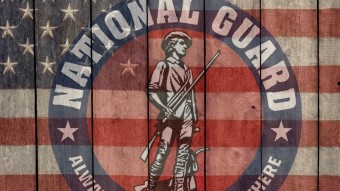Brooke Heintz Morrissey, PhD, LCSW
Brooke served as the J1 Warrior Resilience and Fitness (WRF) Innovation & Outreach Branch Chief to shape wellness and help-seeking culture change efforts across the Army and Air National Guard. Her team led innovation pilots, suicide prevention and readiness analytics, and partnership engagements and agreements. She was the strategic communications lead as a liaison to Congress, public affairs, and media outlets. She is particularly proud of her team’s effort to build a Joint Suicide Prevention Strategy and innovation program framework across the 54 states and territories. Additionally, Brooke has served as the Army National Guard (ARNG) Behavioral Health Chief. She was the principal advisor to the Chief Surgeon and lead of the ARNG Directors of Psychological Health. Her efforts largely supported the conversion to a permanent full-time behavioral health workforce across the ARNG.
Her clinical concentration has largely focused on trauma and mild traumatic brain injury as a DoD clinician, TBI educator and program coordinator, and SME for clinical recommendations and dissemination. She has a strong interest in knowledge translation.
Brooke received her Bachelors and Masters of Social Work from Widener University and her PhD in Human Services from Capella University. She completed ROTC and commissioned into the Army in 2005. She currently serves as a Behavioral Health Officer supporting the JFHQ in the District of Columbia National Guard. Brooke is an Active Duty military spouse and mom to two daughters.
ProjectsProject Safeguard
Implement scalable firearms safety trainings for geographically dispersed military populations
Brain Hijack: Science to Practice in Suicide Prevention
Create a communication platform to support culture shift and ease around suicide prevention and wellness conversations
Finding the Words
Model conversations and shape language around suicide risk and connection to support
Project Safeguard
Implement scalable firearms safety trainings for geographically dispersed military populations
Brain Hijack: Science to Practice in Suicide Prevention
Create a communication platform to support culture shift and ease around suicide prevention and wellness conversations
Finding the Words
Model conversations and shape language around suicide risk and connection to support





